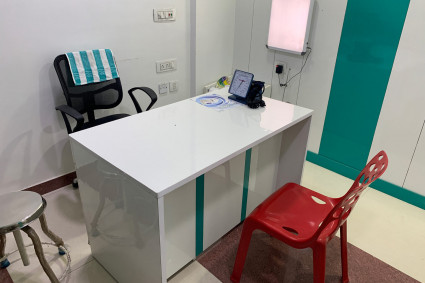
Heart disease resulting from blocked arteries stands as the highest cause of death in India. Plaque accumulation leads to artery narrowing together with stiffening that creates severe blood restriction which results in dangerous heart attacks and strokes. The continued medical technological progress has led to the development of new effective treatments for arterial blockages.
The Rotational Atherectomy Procedure represents a modern therapeutic method that specifically targets complex coronary artery disease, particularly in patients with hard calcified plaque. This blog examines the surgical procedure of rotational atherectomy while detailing its medical benefits and potential risks before forecasting its future impact on cardiology practice.
What is Rotational Atherectomy?
Rotational Atherectomy Procedure operates as a specialized interventional method to dissolve persistent arterial blockages which conventional therapeutic approaches fail to remove effectively. Blood flow to the heart becomes restored through the use of a burr-like mechanical device that breaks hard plaque by rotating.
The treatment provides excellent results specifically against highly calcified plaque that fails to respond to balloon angioplasty or stenting approaches. Devices used in rotational atherectomy deliver one of the strongest options for managing coronary artery disease by helping patients with restrictive vessel diameters or excessive arterial stiffness. Through its specific approach physicians can remove obstructing plaque while preserving healthy heart tissue structure. The Rotational Atherectomy Procedure stands as a fundamental element in current cardiovascular medicine because of its precise operational capabilities.
How Does Rotational Atherectomy Work?
Patients undergoing Rotational Atherectomy Procedure start the treatment by inserting a catheter through either their radial artery (located in the arm) or femoral artery (located through the groin). A catheter containing a tiny rotating tip burr travels to coronary artery plaques through fluoroscopic guidance.
After catheter placement, the rotating device starts at high speed against the calcified plaque to break it down into small particles. The device utilizes its rotational movement to scrape away the plaque deposits leaving the artery walls clear for uninterrupted blood flow. During treatment tissue remnants from the procedure are tiny enough to travel through the bloodstream completely harmlessly.
During the procedure, the cardiologist watches the artery through imaging techniques to ensure complete removal of plaque while maintaining the structural integrity of surrounding tissue. Proper precision during Rotational Atherectomy Procedure execution remains essential because improper device manipulation can produce complications.
Indications for Using Rotational Atherectomy
All patients with coronary artery disease may not qualify for Rotational Atherectomy Procedure treatment. Rotational Atherectomy receives limited application for patients who show two specific conditions: the presence of heavily calcified plaque and unresponsive blockages that treatment with balloon angioplasty has not cured. Other key indications for using rotational atherectomy include:
1. Severely Narrowed Arteries: A rotational atherectomy emerges as a treatment choice when ballooning one's artery proves unsuccessful because of excessive artery narrowing.
2. Heavily Calcified Plaque: When neither balloon catheters nor stents work effectively for treating arteries with massive calcium buildup rotational atherectomy stands as the most suitable option through its abrasive approach.
3. Failed Previous Interventions: Stenting and balloon angioplasty treatments have failed for many patients but rotational atherectomy sometimes becomes their effective surgical option.
4. Challenging Anatomy: This procedure becomes the preferred choice when regular treatments fail because of intricate blockage locations or complex vessel shapes.
Timing of rotational atherectomy concentrates on situations where standard treatments present unacceptable dangers or achieve insufficient results. Disease victims stand to benefit the most from rotational atherectomy because it helps restore blood flow to prevent Heart Attacks thereby becoming a crucial survival method.
Benefits of Rotational Atherectomy
The Rotational Atherectomy Procedure excels at treating coronary artery blockages due to hardening calcifications which standard intervention methods cannot address successfully. Here are some key benefits of this approach:
Here are some key benefits of this approach:
1. Effectiveness in Complex Cases: The rotational atherectomy technique succeeds in clearing blocked arteries containing hardened plaque which other treatment options cannot remove. The procedure enhances treatment outcomes for complex coronary artery disease patients.
2. Precision: Through this method, doctors can hit the plaque specifically while keeping nearby healthy artery cells intact to minimize risks of complications and protect arterial structure.
3. Restoration of Blood Flow: Rotational atherectomy successfully removes blocked material from coronary arteries to restore heart blood flow and reduces Heart Attack risks before or after Heart Attack occurs.
4. Versatility: This surgical approach works across different clinical environments as it partners with stenting and balloon angioplasty thus creating a versatile solution for multiple cardiovascular medical situations.
The Rotational Atherectomy Procedure improves treatment outcomes for cardiovascular disease cases when medical intervention proves challenging. The procedure provides needed treatment hope to patients whose options become restricted because it correctly identifies Heart Attack indicators and enhances blood flow habits.
Risks and Complications
Rotation atherectomy retains medical complications which doctors must consider among the risks of any surgical operation. While the procedure is generally safe when performed by skilled medical professionals, some risks include:
1. Vessel Perforation: During rapid burr spinning the artery may sustain damage thus producing a perforated or ruptured vessel. Such complication occurs only rarely so immediate medical response becomes necessary.
2. Embolism: Debris which forms during treatment occasionally travels into neighboring vessels where it can block smaller blood vessels. Richmond Hospital doctors actively check their patients for debris safety to prevent additional medical issues.
3. Bleeding and Hematoma: Catheter-based procedures create a risk of bleeding at the location where the catheter enters the patient. The catheter entry region sometimes develops hematomas because of blood collection in this area.
4. Dissection: The doctor must watch for artery tears which could trigger additional complications. Accurate technical performance coupled with continuous patient monitoring remains critically important throughout the surgical operation.
A Rotational Atherectomy Procedure remains safe for most patients yet precise patient selection combined with experienced medical treatment and continuous post-op observation minimize procedural risks. A patient requires consultation with their medical advisor to evaluate procedural advantages versus disadvantages.
Recovery and Aftercare
Standard post-atherectomy procedure recovery is uncomplicated yet patients must remain under close observation because complications need to be identified quickly. Patients generally need admission to hospital care for two-day observation after the medical intervention.
After the procedure, doctors will systematically track whether signs of bleeding or infection and other potential after-effects appear. The prevention of further cardiovascular problems requires patients to make lifestyle adjustments in their eating habits and activities along with medications for halting additional plaque development. The blockage severity and the patient's overall condition determine whether rehabilitation programs alongside additional treatments will be necessary.
Heart health relies on both compliant medication use under a doctor direction as well as healthy living practices.
Future of Rotational Atherectomy: Advancements and Innovations
The ongoing evolution of interventional cardiology has led to substantial developments in Rotational Atherectomy Procedure methods. The systematic improvement of safety and effectiveness in this procedure becomes possible as new techniques alongside emerging technologies. Some potential advancements include:
1. Improved Devices: Future atherectomy tools with advanced capabilities help reduce medical complications through enhanced device precision accompanied by better debris management techniques.
2. Integration with Other Techniques: Rotational atherectomy can obtain enhanced clinical outcomes through its conjunction with next-generation stent technologies alongside drug-coated balloons while leveraging additional cardiovascular procedures.
3. Personalized Medicine: Empirical data from genetic testing and imaging can enable personalized medicine which will fuel the development of optimized Rotational Atherectomy Procedures for every patient case.
Rotational atherectomy promises a safer future of treatments that show improved effectiveness in reducing Heart Attack indicators and enhancing clinical benefits across the coronary artery disease population.
Conclusion:
As a leading-edge surgical technique, the Rotational Atherectomy Procedure treats patients who have complicated coronary artery disease, particularly in cases of calcified plaque buildup. This intervention enables both heart attack prevention and quality heart health improvement through its accurate and effective bloodstream blockage-clearing method. Most patients experience greater advantages from this treatment method despite its inherent dangers.
Established medical technology predicts future solutions that will improve the therapeutic potential of the Rotational Atherectomy Procedure for patients struggling with hard-to-remove arterial clogs. Medical assistance should be promptly sought whenever coronary artery disease symptoms appear in you or someone close to you. When patients detect Heart Attack symptoms along with swift healthcare access they improve their heart health protection from dangerous complications.





